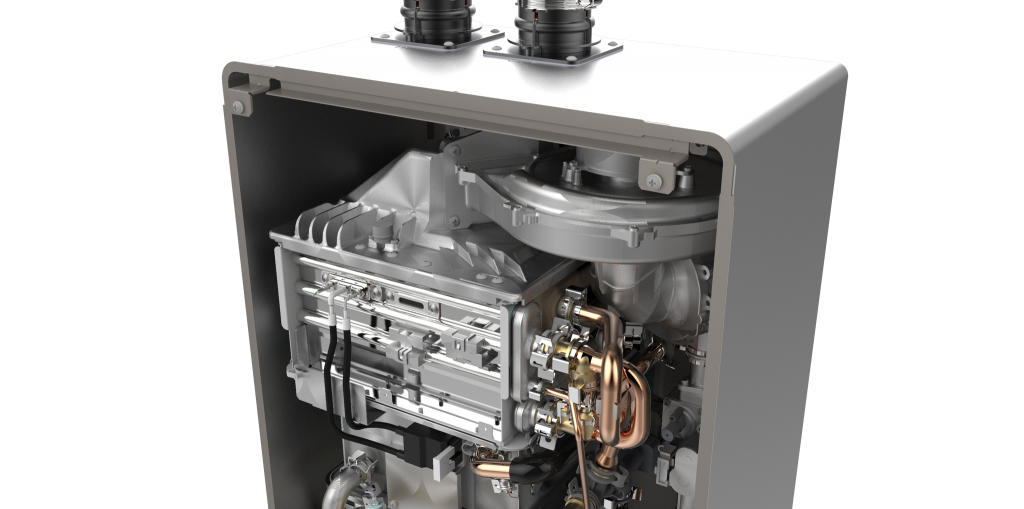Why the Quality of the Heat Exchanger in your Tankless Water Heater Matters
Noritz’s latest tankless models include corrosion-resistant 316L austenite stainless steel heat exchangers with a U-bend shape for higher performance and efficiency than most units on the market.
Like stagehands in a play, heat exchangers play a crucial, behind-the-scenes role in the life and operation of a tankless water heater. They transfer heat to the building’s domestic water and, for that reason, represent the heart of the entire system.
Noritz is at the forefront of heat exchanger technology with its inclusion of U-bend, 316L austenite stainless steel heat exchangers in its newest residential and commercial units. This higher grade of stainless steel is more durable and efficient than competitors’ ferrite exchangers.
“Our use of austenite drives the initial cost up a bit relative to other makes and models, but you are paying for increased lifetime and performance,” says Noritz national sales manager Jason Corey.
Austenite versus ferrite in tankless
So what’s the difference? It comes down to durability. Austenite stainless steel alloys typically have nickel added to them and often have a higher chromium content. These two properties give austenite very good corrosion resistance against acids, alkalis and chlorides. Since they contain nickel, austenite stainless steel heat exchangers are more expensive, but they also are expected to last longer and have fewer maintenance problems.
Ferrite stainless steel, the more common alloy on the market, is less expensive because it doesn’t contain as much nickel. The downside is it may be more prone to corrosion, which will shorten the heat exchanger’s — and the water heater’s — life. Ferrite is more resistant to very high temperatures, but these temperatures are typically well above what would be used in a domestic hot water application.
Getting what you pay for
Whether or not to pay a little bit extra for the austenite stainless steel heat exchanger is up to the building owner. However, doing so could result in longer-term performance.
 The amount spent replacing a corroded heat exchanger or — worse — replacing the entire water heater is much higher than investing more upfront in a product that will last. This is especially true in commercial applications that put more strain on water heaters. The threat of heat-exchanger failure is compounded in such applications, and the consequences — absence of hot water in a restaurant or hotel, for example — are far more devastating.
The amount spent replacing a corroded heat exchanger or — worse — replacing the entire water heater is much higher than investing more upfront in a product that will last. This is especially true in commercial applications that put more strain on water heaters. The threat of heat-exchanger failure is compounded in such applications, and the consequences — absence of hot water in a restaurant or hotel, for example — are far more devastating.
Another factor to consider is geography. Certain regions of the country have harder water with a higher concentration of minerals. These regions should definitely consider austenite stainless steel heat exchangers as a way of preventing damage to the water heater.
>> Check out this water hardness map
In addition to the austenite, Noritz uses U-bend heat exchangers in its newer models, which improve heat transfer and lead to higher efficiency. Most tankless water heaters on the market use flat plate heat exchangers, which suffer from higher pressure losses and generally less-efficient operation.
So the old adage, “You get what you pay for,” holds true for tankless water heaters. Commercial builders and specifiers would be especially wise to go the extra mile in their upfront investment to better assure longevity and efficient operation, which will eventually pay for itself.
To view Noritz’s latest commercial offering, the NCC199CDV, which includes austenite stainless steel heat exchangers, please visit http://www.noritz.com/products/ncc199cdv/
